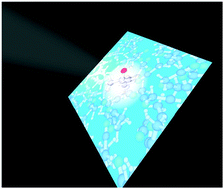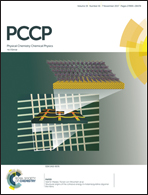Hydrogen bond and lifetime dynamics in diluted alcohols†
Abstract
Hydrogen-bonding plays a crucial role in many chemical and biochemical reactions. Alcohols, with their hydrophilic and hydrophobic groups, constitute an important class of hydrogen-bonding molecules with functional tuning possibilities through changes in the hydrophobic tails. Recent studies demonstrated that for solutions of alcohols changes in the hydrophobic tail significantly affect a broad range of dynamics properties of the liquid. Still, the understanding is lacking on the origin of such differences in terms of a solvent- versus a solute-dominated effect. Here we reveal this origin by studying hydrogen-bond dynamics in a number of alcohol molecules – from methanol to butanol – diluted in a hydrogen-bond accepting environment, acetonitrile. The dynamics were investigated by pump–probe and 2D infrared spectroscopy combined with molecular dynamics-spectral simulations, using the OH stretching mode as a reporter. For all the considered alcohols, the vibrational lifetime of the OH stretching mode was found to be ∼3 ps. The hydrogen-bond dynamics exhibit similar behavior with a fast (∼200 fs) initial relaxation dominated by librational motion and a slow (∼4 ps) relaxation due to hydrogen-bond exchange dynamics. The similar dynamics over such a broad range of alcohols led us to conclude that the previously observed differences in dynamics in bulk alcohols originate from the dependence of the solvent properties on the hydrophobic tail, while the solute properties as found herein are essentially independent of the hydrophobic tail.



 Please wait while we load your content...
Please wait while we load your content...